Indexed In
- Open J Gate
- The Global Impact Factor (GIF)
- Open Archive Initiative
- VieSearch
- International Society of Universal Research in Sciences
- China National Knowledge Infrastructure (CNKI)
- CiteFactor
- Scimago
- Ulrich's Periodicals Directory
- Electronic Journals Library
- RefSeek
- Directory of Research Journal Indexing (DRJI)
- Hamdard University
- EBSCO A-Z
- Publons
- Google Scholar
Useful Links
Share This Page
Journal Flyer

Open Access Journals
- Agri and Aquaculture
- Biochemistry
- Bioinformatics & Systems Biology
- Business & Management
- Chemistry
- Clinical Sciences
- Engineering
- Food & Nutrition
- General Science
- Genetics & Molecular Biology
- Immunology & Microbiology
- Medical Sciences
- Neuroscience & Psychology
- Nursing & Health Care
- Pharmaceutical Sciences
Original Research Article - (2021) Volume 11, Issue 6
Effect of Magnetic Fields on the Sludge Properties in the Aeration Basin of the Activated Sludge Treatment Process
Ghorban Asgari1, Ramin Khoshniyat2* and Hana Shabrandi32Student Research Committee, Department of Environmental Health Engineering, School of Public Health, Hamadan University of Medical Sciences, Hamadan, Iran
3Supervisor of Wastewater Treatment Plan Laboratory, Sanandaj, Iran
Received: 11-Jun-2021 Published: 28-Jun-2021, DOI: 10.35248/2252-5211.21.11.412
Abstract
Purpose: Sludge management is one of the most important problems in wastewater treatment plants (WWTPs) and an activated sludge treatment process. Excessive growth of filamentous bacteria may cause, less dense floc structure, poor sludge compaction, slow settling, and wash-out solids from the final clarifiers. Sludge volume index (SVI) is an unknown method and the most appropriate parameter to express and estimate the settling characteristics of the sludge. The use of chemical materials to increase the volume of sludge is custom, but these methods are expensive and are not a green process. In recent years, the use of integrated treatment methods such as the use of magnetic fields (MFs) with biological methods, to accelerate the growth of microorganisms has become common.
Methods: In this case and control study use of MFs (from 0.19 to 3.21mT) to decrease SVI (30 minutes time to settling) or enhancement of sludge, considered.
Results: Based on the result of this study by increased the intensity of MFs, a decrease in SVI (0.03 to 53 percent) happened statistically.
Conclusion: One of the main, physical, and practical methods to reduce the huge volume of sludge by decrease SVI in WWTPs can be used by applying MFs.
Keywords
Wastewater; Sludge; MFs
Introduction
Rapid industrial development, based on increasing urbanizationand inevitably, development of wastewater collection network and municipal wastewater treatment plants (WWTPs), are basic elements of the sewage sludge production in all parts of the world [1].
The activated sludge process is the most important process for biological treatment of wastewater. The biological degradation process has a major role in confirming efficient wastewater treatment. Aeration tank is the heart of the system and degraded organic matters that happened by the floc-forming microorganisms [2]. The activated sludge treatment processes are widely used in municipal WWTPs [3]. Coordinating of microorganisms such as all species of bacteria, made a mix microbial mass to treatment of wastewater. Of course, the role and function of bacteria to stabilization of organic matterare the most important than the other microorganisms [4].
Production of 17.8 million tons dry matter of sludge average annually in the last decade in the United States of America and 0.36 and 2.2 million tons in Australia and Japan are examples of this idea [5]. The treatment, disposal, and, the operating costs of the wastewater treatment process in the course of sludge management are very expensive, so dewatering and turn down the volume of sludge are most important [6]. Based on particle sizes activated sludge has a wide range (0.5–5.0 μm). Slow settling of activated sludge flocshave been made the most separation problems [7].
In course of reducing hydration of sludge, use of equipment and conditioning agents is necessary. One way is the use of polyelectrolytes for the dewatering, butthis method have many significantly limited [8,9].
Operation of a wastewater treatment plant in term of sludge has one basic parameter is well-known as sludge volume index (SVI). Ascalculated by measurement of volume of the sludge that sediment in a graduated cylinder (contain 1000 mL of mixed liquor suspended solids of the effluent of the aerated basin) for 30 minutes. Settling characteristics of the activated sludge is typically expressed by SVI in biological suspensions. The sludge that settles well has an SVI equal to or less than 120 mL/g [10,11].
In achieving successful separation of solid-liquid from wastewater, sludge flocs must settle and compact to the bottom of the clarifiers, SVI, and sludge density index (SDI) are two main factors are used as indicators of sludge settling in term of the operational function [9].
Sludge bulking phenomena that sometimes called, filamentous bulking is an operationalproblem in the biological treatment plans and it happens by overgrowth of filamentous bacteria [12]. There are proposed many theories to description of sludge bulking, but they are not entirely express the excessive growth of these microorganism.
Sothe settling of flocs is a serious problem in WWTPs, and structural stability of granular sludge decrease by filamentous bacteria overgrowth [10,11].
Dewatering or minimize the sludge volume to reduce its overall volume and enabling the easy handling of the sludge is the first and main essential step for appropriate sludge treatments[13]. Due to the highly hydrated colloidal structures of microbial aggregates and stronger affinity between water and organic compositions, sludge is difficult to be dewatered [14].It must be admitted that, there is a lack of a comprehensive review of sludge dewatering and limited literature focused on dewatering conditioning on sewage sludge [15,16].
At final it must be mention to this main topic that in WWTPs, the SVI forecast has an essential impact on the prediction of bioreactor parameters such as mixed liquor suspended solids (MLSS), recirculation grade of sludge, dissolved oxygen (DO) concentration, pH, and SDI [16].
We want to know in this study, could we decrease SVI or SDI of MLSS in the aeration basin of the activated sludge treatment process by use of MFs, without the use of any chemical materials?
Materials and Methods
Design of experimental apparatus
In this study, for the setup of the uniform intensity of magnetic fields, 182 meters of coated wire (750 turn coils in five rows) made of copper with 1mm thickness, was wrapped around a galvanized iron. The galvanized iron used as fundamental has 0.5 mm thickness and it is prevented the separation and disintegration of wires.
Two graduated cylinders (this equipment is used to measure SVI in the laboratory) are used as reactors. The volume of these is 1000 mL.
The Intensity of Magnetic Fields (IMFs)
In this study, in term of generation Direct Current (DC)use of DC power (Dazheng DC power, PS-305D) considered, which produces 0.01 to 5 A. in this way, the intensity of MFs is chosen between 0.05 to 4.75 mT as shown in Table 1. DC power plugged to the solenoid and a lamp to complete loop of the electrical circuit. Since the wires have an internal resistance, it is necessary to calculate the effective current by means of Ampere-meter (digital clamp meter DT3266L). The IMFs of this experiment were calculated by equation 1.
B = μNI/L (1)
Which
B = intensity of magnetic fields (T)
μ = permeability of water and wastewater (1.26 × 10-6 H/m)
N = turn's number
I = effectiveness of direct current (A)
L = length of wire around the reactor (m)
Then for calculated intensity of magnetic field in the first run by above equation:
B = (1.26 × 10-6 × 750 × 0.2)/1 = 0.00019 T = 0.19mT
| run | I (A) | MFIs (mT) | MLSS (mg/L) |
|---|---|---|---|
| 1 | 0.2 | 0.19 | 1900 |
| 2 | 0.4 | 0.38 | 1900 |
| 3 | 0.6 | 0.57 | 1970 |
| 4 | 0.8 | 0.76 | 1970 |
| 5 | 1 | 0.95 | 1970 |
| 6 | 1.2 | 1.13 | 1860 |
| 7 | 1.4 | 1.32 | 1860 |
| 8 | 1.6 | 1.51 | 1860 |
| 9 | 1.8 | 1.70 | 2230 |
| 10 | 2 | 1.89 | 2230 |
| 11 | 2.2 | 2.08 | 2250 |
| 12 | 2.4 | 2.27 | 2250 |
| 13 | 2.6 | 2.46 | 2250 |
| 14 | 2.8 | 2.65 | 2170 |
| 15 | 3 | 2.84 | 2170 |
| 16 | 3.2 | 3.02 | 1480 |
| 17 | 3.5 | 3.21 | 1870 |
Table 1. Intensity of current (A), IMFs (mT) and MLSS (mg/L).
Source of MLSS
Source of MLSS used in this study was collected from the effluent of the aerator unit of municipal wastewater treatment plants of Sanadnaj (a city located in the west of Iran) daily (shown in table 1) and, to prevention of any changes in the samples, all of them immediately brought to the laboratory within less than 5 minutes. It must be mention that MLSS was taken from the effluent of the aeration tank daily and, the differences between them are the change of daily and hourly flow and concentration of wastewater contents.
Lab conditions
For the prevention of any changes in the quality of MLSS in course of transportation, such as oxygen concentration, all experiments were performed in WWTP's Lab. The temperature of the Lab was between 25–30ºC during the examination.
Samples volume and time of exposure
The main goal of this study is to determine SVI in case and control samples. So in the first of each run, MLSS of the samples detected (through the 5 mL of the sample from the paper filter by a vacuum pump and then drying by the oven in 105˚C for 1 hour, differences between weight of paper before and after is MLSS mg/L) [17]. Then 1000mL of MLSS poured into the cylinder and placed in MFs as a case sample. Also, 1000 mL ofMLSS poured into another cylinder as a control sample, too. After 30 minutes of exposure, temperature, DO, pH, SVI of case and control samples detected immediately, and then SDI calculated.
Run of the experiments
We divided the range of IMFs from 0.05 to 4.75 mT to 17 runs. In each run, 0.3mT added to the intensity. It must be mentioned that the range of MFs is the limitation of this study that is based on the generation of DC by DC power.
Measurement of other indicators
As pH and temperature are the most important parameters in all of the biological process, so in this study pH (pH lab 827 Metrohm) and temperature (testo104-IR) in the case and the control samples are measured. On the other hand, DO (by HQ 40d HACH) as the main itemin the aerobic biological process, in each run of the experiment measured too.
Results
Effect of MFs on the temperature of the case and control samples
Pass of current through an electrical conductor produces thermal energy, this phenomenon is called Joule heating [16]. By increasing the IMFs, the temperature of MLSS in the case samples raises more than the control samples (Figure 1). Also, these differences between them (from 0.1 to 24.8) are statistically significant (p‹0.005).

Figure 1: Temperature (Celsius degree) of the case and control samples.
The internal and external temperature of the reactor in this study raises 45.3 and 58.8ºC. In Figure 2 rise of the external temperature of the case reactor samples is shown.
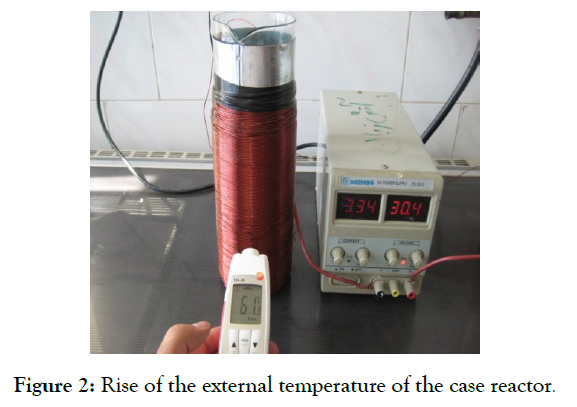
Figure 2: Rise of the external temperature of the case reactor.
Effect of MFs on pH of the case and control samples
The range of pH in the case samples is from 7.11 to 7.45. This parameter on the control sample is from 7.32 to 7.62. When means of pH of the case and control compared with each other, a meaningful difference have appeared. After 30 minutes present of MLSS in MFs, the pH of the case samples decreased.There is not any logical trend in course of increase pH not only appeared in the case samples, but also in the control samples (Figure 3).
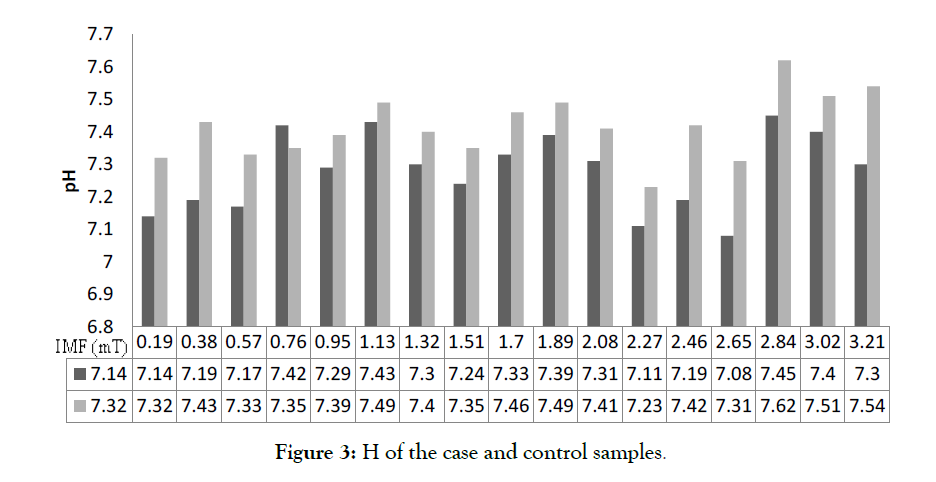
Figure 3: H of the case and control samples.
Hou-Feng Wang et al., in 2017 studied onacid conditioning mechanism in term of dewatering of sludge,by decreasing of pH, treated sludge and fluidization, increased to equilibrium level. The floc structure and flocculation depend strongly on pH of sludge [18]. Also in 2002, Liao et al., said that in the process of sludge dewatering, pH in the range of acidic is a suitable for the promotion of the process [16].
Effect of MFs on DO of the case and control samples
By exposure of MLSS for 30 minutes under MFs, the concentration of DO in the case cylinders decreased as shown in Fiqure 4. When the mean concentration of DO in the case and control compared to each other, statistical differences appeared (p‹0.005).The amount of DO decreases with higher temperature, salinity. On the other hand, the concentration of DO in cold water is much more than in warm water [19].
In aerobic conditions, degradation of the organics matters by present of DO happened. DO has key role of stabilization of organic components, physiological growth of microorganisms communities in WWTPs and has main function of operational costs [20].
Effect of MFs on SVI of the case and control samples
A decrease of SVI (mL/g) happened in the whole of the case samples. The minimum decrease happened in 0.57 mT (0.03%) and the maximum befalls in 2.46 and 2.84 mT (53%). So by apply MFs half of a hour, the sludge could be settle without the use of any chemical materials. These differences in all of the runs of study have significant statistically (Figure 5).
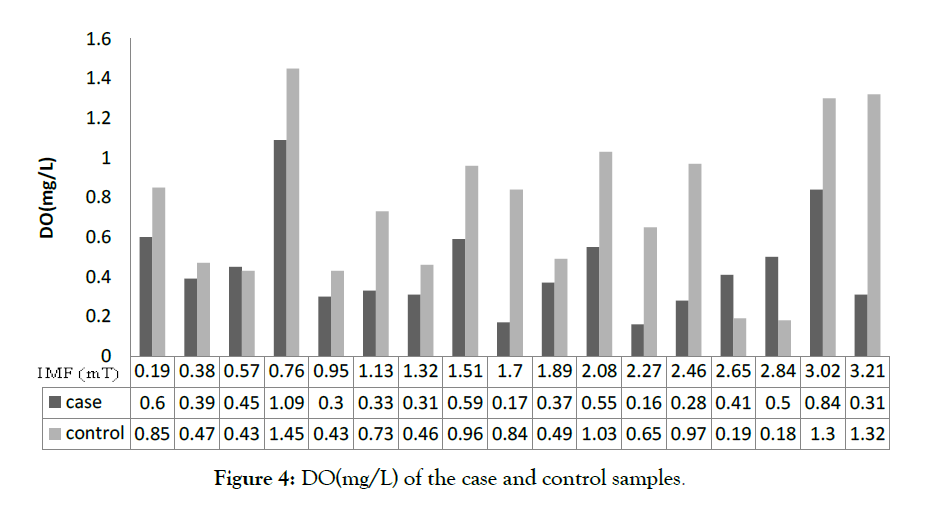
Figure 4: DO(mg/L) of the case and control samples.

Figure 5: SVI(mL/g) of the case and control samples.
As it is clear the trend of decrease is not linear, as in some ranges of exposure rise of differences between the case and control samples present. Differences between SVI in the case (2.84 mT and on the left) and the control (on the right) samples are shown in Figure 6. Also, four SEM of flocs in the case (MFIs is equal to 2.27mT) and the control are illustrated in Figure 7. In this image, density of flocs in the case is more than the control sample. In Figure 8 light microscopic image of flocs in the case and control samples is shown (10x magnification a bright-field image). It must be mention that SVI in case is 800 ml/g and SVI in control is 400 ml/g.
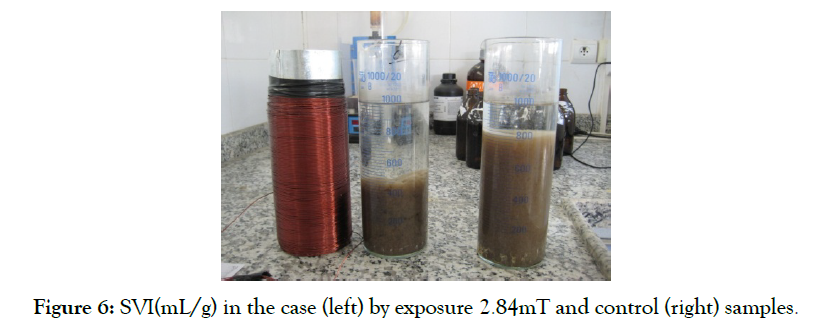
Figure 6: SVI(mL/g) in the case (left) by exposure 2.84mT and control (right) samples.
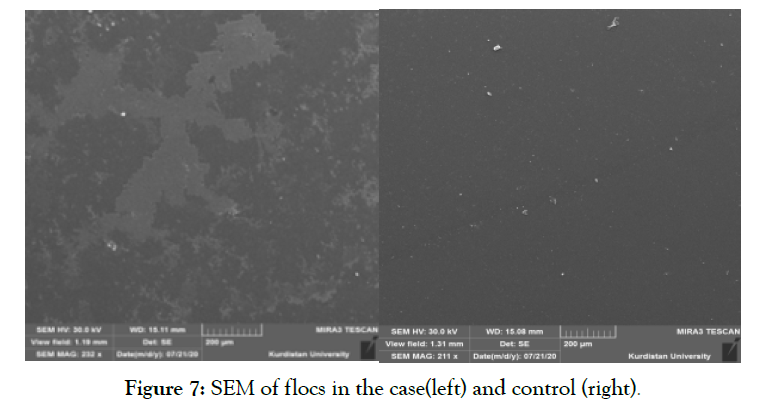
Figure 7: SEM of flocs in the case(left) and control (right).
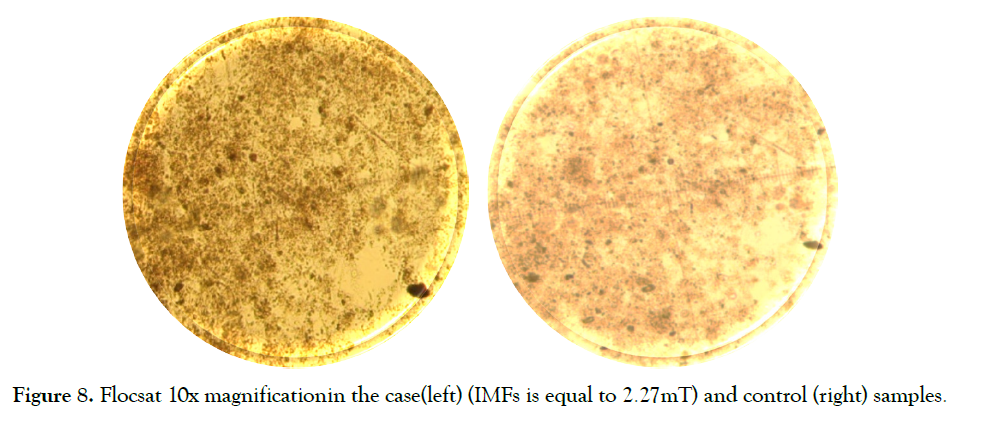
Figure 8. Flocsat 10x magnificationin the case(left) (IMFs is equal to 2.27mT) and control (right) samples.
Effect of MFs on SDI of the case and control samples
As the Sludge density index (SDI) is 100 per SVI, so any changes in SVI will be affect SDI [21]. In Figure 9 change of SDI in the case and control samples is shown. The trend of decrease of SDI by increase IMFs has happened.
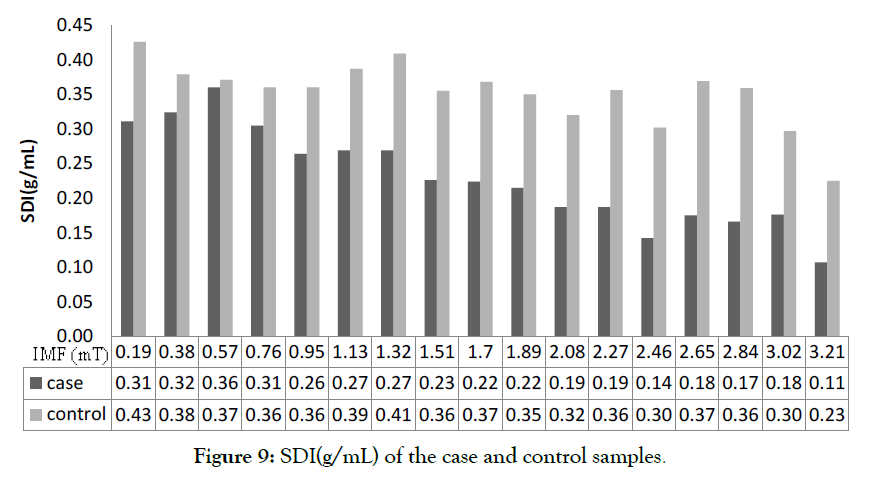
Figure 9: SDI(g/mL) of the case and control samples.
Many new studies in course of wastewater treatment have been conducted to explore the bacterial community of activated sludge in WWTPs, such as research had down by Match et al., and Awolusi and et al. [22,23].
Discussion
The skeleton structure of stabilization of organic components in the activated sludge process, is filamentous bacteria[24]. Weak or moderate magnetic fields have positive biological effects, according to many studies [25]. Influence of MFs are both on biochemical and biological systems [26]. Increase in biomass activity,limitations in term of transfer of mass through the cell walls, are effects of MFs on microbial systems [27].
When biomass exposure by MFs, improvement of treatment in activated sludge process have been befall [28,29] and, sludge settle-ability [30]. Some of the studies in course of using the MFs in sludge and wastewater treatment have focused on stabilization of carbon components [31]. It must be mention that the further research in course of use of MFs in biological process is necessary, despite of any studies which have been improved.
Combination of MFs, polyelectrolyte and iron coagulant, can be effect on sludge dewatering, intensity of MFs which generated by a solenoid is recommended 0.04 T, according to previous studies. On the other hand, some of the researches recommended intensity of 40 mT or higher for dewatering of sludge [32]. Use of 0.04 T in many researches is accepted by the other authors [33]. Effect of MFs on microorganisms in the environmental is an interesting discussion for researchers [34]. Intensity of MFs, temperature, category of microorganism, exposure duration and, other factors are influence on microorganisms growth [35]. Investigating the effect of MFs in biomass of sludge, 20 mT intensity of MFs has been suggested [36]. Exposure of biomass to MFs,improve the treatment of wastewater process [28], activity of bacteria[37]and, settling properties of sludge [30].
There is a wide range to detect the optimum intensity of MFs. Intensity of MFs is lower than 50 mT has positive effects on growth of microorganisms [38]. Kind or type of microorganism activity, function of enzymes in biological system are most important to detect the optimal Intensity of MFs [39].
Although many studies have been done to examine interaction between MFs and metabolic ofmicroorganisms, but There are many contradictions in this case[38]. Finally, it must be say, the mechanisms of effect of MFs are not clear, as the data from physiological, biochemical and physical studies are limited till now [40].
An interesting subject in term of interaction between microorganism and MFs is that the microorganisms have the properties to move to area that the intensity of MFs is more. This properties is called Magnetotaxis [41].
Conclusion
Reduce the production of sludge, is the goal of all processes in WWTPs. The use of chemical materials and biological processes in course of operation and management is most common. The high cost of chemical processes and the low rate of microbial growth of microorganisms are two main limitations of these processes. Bulky waste and poor settling sludge in the second basin are two problems in the activated sludge treatment process. By use of MFs in the low range of 0.19 to 3.21 mT decrease of SVI as the main index of sludge have been happened. In this process decrease in pH and DO are befall too and, an increase in temperature of MLSS is another result of MFs.
Acknowledgments
Financially supported of this study hasdone by Hamadan University of Medical Sciences (research project number 9904242623). We are grateful to the managers and staff of Sanandaj wastewater treatment plant for assistance.
Ethical Issues
The authors of this research hereby certify that all parts of the study such as 'study design and ethics approval, data analysis, authorship, conflicts of interest, redundant publication and plagiarism' observed in writing the article and the data of this research no publish or will be published separately in other journals or database.Ethics committee code of this article which confirmed by Hamadan University of Medical Sciences is IR.UMSHA.REC.1398.749.
Competing Interests
There is not any competing interests between authors of this article
Authors' Contributions
All of the authors of this article (three people), at least participate in one section of study (design the research, experiments, data collection, data analyses and writing). As well as, the final manuscript has been revised by them.
REFERENCES
- Cieślik BM, Namieśnik J, Konieczka P. Review of sewage sludge management: standards, regulations and analytical methods. Journal of Cleaner Production 2015;90:1-15.
- Bridgeman J, Baker A, Carliell-Marquet C, Carstea E. Determination of changes in wastewater quality through a treatment works using fluorescence spectroscopy. Environmental technology 2013;34:3069- 77.
- Chen Z, Zhang W, Wang D, Ma T, Bai R, Yu D. Enhancement of waste activated sludge dewaterability using calcium peroxide pre-oxidation and chemical re-flocculation. Water research 2016;103:170-81.
- Winkler MH, Kleerebezem R, De Bruin L, Verheijen P, Abbas B, Habermacher J, et al. Microbial diversity differences within aerobic granular sludge and activated sludge flocs. Applied microbiology and biotechnology 2013;97:7447-58.
- USEPA BG. Use, and Disposal in the United States. USEPA Office of Solid Waste: Washington, DC, USA 1999.
- Mikkelsen LH, Keiding K. Physico-chemical characteristics of full scale sewage sludges with implications to dewatering. Water research 2002;36:2451-62.
- Jenkins D, Richard MG, Daigger GT. Manual on the causes and control of activated sludge bulking, foaming, and other solids separation problems: Crc Press; 2003.
- Skinner SJ, Studer LJ, Dixon DR, Hillis P, Rees CA, Wall RC, et al. Quantification of wastewater sludge dewatering. water research 2015;82:2-13.
- Wójcik M, Stachowicz F. Influence of physical, chemical and dual sewage sludge conditioning methods on the dewatering efficiency. Powder Technology 2019;344:96-102.
- Lou IC, de los Reyes III FL. Clarifying the roles of kinetics and diffusion in activated sludge filamentous bulking. Biotechnology and bioengineering 2008;101:327-36.
- Li W-M, Liao X-W, Guo J-S, Zhang Y-X, Chen Y-P, Fang F, et al. New insights into filamentous sludge bulking: The potential role of extracellular polymeric substances in sludge bulking in the activated sludge process. Chemosphere 2020;248:126012.
- Eikelboom DH. Process control of activated sludge plants by microscopic investigation: IWA publishing; 2000.
- Wong JW, Murugesan K, Selvam A, Ravindran B, Kurade MB, Yu S-M. Dewatering of saline sewage sludge using iron-oxidizing bacteria: effect of substrate concentration. Bioresource Technology 2016;213:31-8.
- Zhang J, Zhang J, Tian Y, Li N, Kong L, Sun L, et al. Changes of physicochemical properties of sewage sludge during ozonation treatment: Correlation to sludge dewaterability. Chemical Engineering Journal 2016;301:238-48.
- Christensen ML, Keiding K, Nielsen PH, Jørgensen MK. Dewatering in biological wastewater treatment: a review. Water research 2015;82:14-24.
- Liao B, Allen D, Leppard G, Droppo I, Liss S. Interparticle interactions affecting the stability of sludge flocs. Journal of colloid and interface science 2002;249:372-80.
- Asl FB, Leili M, Vaziri Y, Arian SS, Cristaldi A, Conti GO, et al. Health impacts quantification of ambient air pollutants using AirQ model approach in Hamadan, Iran. Environmental research 2018;161:114-21.
- Wang H-F, Ma Y-J, Wang H-J, Hu H, Yang H-Y, Zeng RJ. Applying rheological analysis to better understand the mechanism of acid conditioning on activated sludge dewatering. Water research 2017;122:398-406.
- Bennett GF. Industrial Waste Treatment Handbook, Woodward & Curran, Inc., Butterworth-Heinemann, Burlington, MA (2006), 532 pp., US $99.95, ISBN: 0-7506-7963-8. Elsevier; 2007.
- Wells GF, Park HD, Yeung CH, Eggleston B, Francis CA, Criddle CS. Ammonia‐oxidizing communities in a highly aerated full‐scale activated sludge bioreactor: betaproteobacterial dynamics and low relative abundance of Crenarchaea. Environmental microbiology 2009;11:2310-28.
- Tchobanoglus G, Burton F, Stensel HD. Wastewater engineering: Treatment and reuse. American Water Works Association Journal 2003;95:201.
- Metch JW, Wang H, Ma Y, Miller JH, Vikesland PJ, Bott C, et al. Insights gained into activated sludge nitrification through structural and functional profiling of microbial community response to starvation stress. Environmental Science: Water Research & Technology 2019;5:884-96.
- Awolusi OO, Kumari S, Bux F. Evaluation of Ammonia Oxidizing Bacterial Community Structure of a Municipal Activated Sludge Plant by 454 High-Throughput Pyrosequencing. Environmental Processes 2018;5:43-57.
- Gnida A, Żabczyński S, Surmacz-Górska J. Filamentous bacteria in the nitrifying activated sludge. Water Science and Technology 2018;77:2709-13.
- Gao M, Zhang J, Feng H. Extremely low frequency magnetic field effects on metabolite of Aspergillusniger. Bioelectromagnetics 2011;32:73-8.
- Kovacs PE, Valentine RL, Alvarez PJ. The effect of static magnetic fields on biological systems: Implications for enhanced biodegradation. Critical reviews in environmental science and technology 1997;27:319-82.
- Yavuz H, Çelebi SS. A typical application of magnetic field inwastewater treatment with fluidized bed biofilm reactor. Chemical Engineering Communications 2003;190:599-609.
- Křiklavová L, Truhlář M, Škodová P, Lederer T, Jirků V. Effects of a static magnetic field on phenol degradation effectiveness and Rhodococcuserythropolis growth and respiration in a fed-batch reactor. Bioresource technology 2014;167:510-3.
- Zaidi NS, Muda K, Sohaili J, Toemen S, Yusof NZ. Optimization of operating parameters for aggregation under magnetic field by response surface methodology. ARPN Journal of Engineering and Applied Sciences 2016;11:2419-25.
- NurSyamimi Z, Muda K, Sohaili J, Sillanpää M. Optimization of activated sludge physical properties by magnetic field via response surface modeling. Applied Mechanics and Materials: Trans Tech Publ; 2014. p. 98-103.
- Zaidi NS, Sohaili J, Muda K, Sillanpää M. Magnetic field application and its potential in water and wastewater treatment systems. Separation & Purification Reviews 2014;43:206-40.
- Hrut K, Kamizela T. Changes in filtration properties of digested sludge under the influence of magnetic field. Desalination And Water Treatment 2018;117:282-9.
- Wang Z, Liu X, Ni S-Q, Zhang J, Zhang X, Ahmad HA, et al. Weak magnetic field: A powerful strategy to enhance partial nitrification. Water research 2017;120:190-8.
- Liu S, Yang F, Meng F, Chen H, Gong Z. Enhanced anammox consortium activity for nitrogen removal: Impacts of static magnetic field. Journal of Biotechnology 2008;138:96-102.
- Mateescu C, Buruntea N, Stancu N. Investigation of Aspergillusniger growth and activity in a static magnetic flux density field. Romanian Biotechnological Letters 2011;16:6364-8.
- Ji Y, Wang Y, Sun J, Yan T, Li J, Zhao T, et al. Enhancement of biological treatment of wastewater by magnetic field. Bioresource technology 2010;101:8535-40.
- Yin X, Qiao S, Zhou J. Using electric field to enhance the activity of anammox bacteria. Applied microbiology and biotechnology 2015;99:6921-30.
- Beretta G, Mastorgio AF, Pedrali L, Saponaro S, Sezenna E. The effects of electric, magnetic and electromagnetic fields on microorganisms in the perspective of bioremediation. Reviews in Environmental Science and Bio/Technology 2019;18:29-75.
- Büyükuslu N, Çelik Ö, Atak Ç. The effect of magnetic field on the activity of superoxide dismutase. Journal of cell and molecular biology 2006;5:57-62.
- Letuta UG, Berdinskiy VL. Magnetosensitivity of bacteria E. coli: Magnetic isotope and magnetic field effects. Bioelectromagnetics 2017;38:581-91.
- Asgari G, Khoshniyat R, Golrokhi MM. Survey of Magneto-tactic Properties of Escherichia coli Under Static Magnetic Fields. Avicenna Journal of Environmental Health Engineering 2020;7:14-9.
Citation: Asgari G, Khoshniyat R, Shabrandi H (2021) Effect of Magnetic Fields on the Sludge Properties in the Aeration Basin of the Activated Sludge Treatment Process. Int J Waste Resour 11: 414.
Copyright: © 2021 Asgari G, et al. This is an open access article distributed under the terms of the Creative Commons Attribution License, which permits unrestricted use, distribution, and reproduction in any medium, provided the original work is properly cited.

